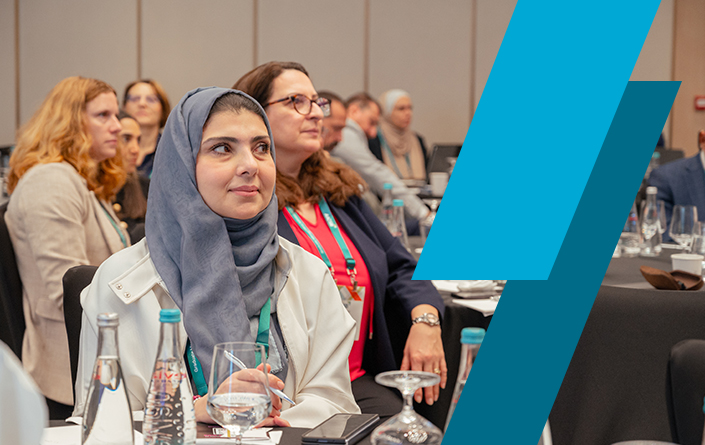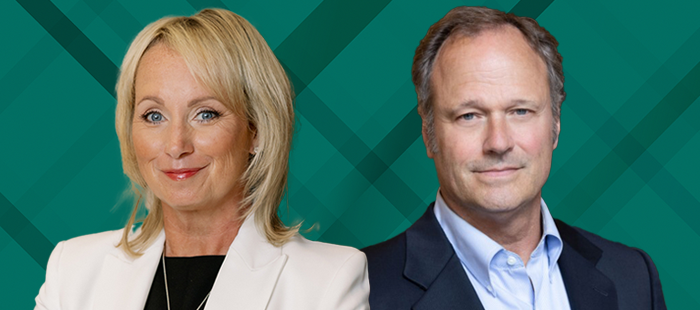Creating a Culture of Belonging in Academia
- Through its data analytics project, The PhD Project found that increased diversity in faculty and staff leads to increased diversity in students.
- Universities cultivating a sense of belonging are more likely to keep faculty and students engaged with their schools for a longer period throughout the tenure track.
- The PhD Project's Aspiring Leaders program helps participants navigate the rigorous process of becoming higher education leaders.
Transcript
Blane Ruschak: [0:14] For those that know about The PhD Project, we started in 1994 with an effort on trying to increase diversity in the business world by increasing diversity in the front of the classroom, with the thought being, if we increase the front-of-the-classroom diversity, that would lead to more students of color wanting to come into business and generate a more diverse business population.
[0:34] Here we are many years later. We're happy to say that we've been able to increase our diverse faculty population from under 300 when we first started to over 1,400 active diverse faculty at U.S. business institutions, which is great.
We thought, if we increase the front-of-the-classroom diversity, that would lead to more students of color wanting to come into business and generate a more diverse business population.
[0:49] The second question is, how do you know that it's making a difference and an impact? We embarked on a data analytics project to look at, is there a correlation between schools that have diverse faculty and their student population?
[1:04] By looking at hundreds of schools through public databases and faculty data, we were able to conclude that there is a very high correlation of schools that have diverse faculty to their diverse student population.
Michael Devaughn: [1:17] My PhD Project journey began back in the early 1990s. I attended the second PhD Project Conference in 1995, in Chicago. Before that, in fact two years prior, I had been a TA, a teaching assistant, for a favorite professor that I'd had in college. I did it on my free time after work for 50 minutes every Monday night for two and a half years.
[1:42] It was my wife who really recognized my passion for that, as she calls it, "That little 50-minute class you teach every Monday night." She said, "Honey, you should really see if you can do something about that." That's when I got the "flyer," as we call it in The PhD Project world, about this new organization that was trying to connect folks of colors to opportunities in higher ed.
[2:08] That began my journey, attending the conference in 1995. Then, I like to say I took two years to think about it. I enrolled in 1997, ultimately earned my PhD in 2002, and took my first university job.
Blane: [2:22] If a school were to invest in creating more diverse faculty on their staff, how long would it take to increase the student population? Would there be a time lag? We were able, through our study looking at that same data, to show that, yes, if a school were to invest in creating more faculty of color, it would lead to an increase in student diversity.
[2:43] The next question is, how to recruit and retain diverse faculty? We did a survey recently, asking our 1,400 members, and our 250 students, "What attracts you to a school when you're looking to make that first pivot into a fulltime role? What are the things that attract you? What are the things that are the deal-breakers?"
We were able, through our study . . . to show that, yes, if a school were to invest in creating more faculty of color, it would lead to an increase in student diversity.
[3:03] Interesting, with attraction, the number one was location. That could be location near a city, or where services you might need. The location was number one, followed closely by financial incentives, which makes sense, followed by research, support for your research. The fourth was culture. Keep that in mind. Culture was forth when looking at a school.
[3:24] Then we said, "What are your deal-breakers?" The two that popped up were location and financial support, but further down on the scale. They weren't as important when people were looking at a school.
[3:37] Then we asked, "If you're on a tenure track, what are the things that would cause you to have concern about staying at that school?" Which is interesting is, if you remember the first couple were financial and location, once they're on tenure track, the most important thing about keeping them at the school was culture. It changes over time.
[3:57] It's really important that if you want to retain them; it's not just to create the initial items that are important when they come in, but to retain them, you have to make sure the culture is there and there's a culture fit.
Michael: [4:07] Financial package is important, geography is important, but what's really important is the culture of the school. For me, what really hit home was having a champion. A person that the institutions who connected me to the resources I needed to be successful.
Financial package is important, geography is important, but what's really important is the culture of the school.
[4:24] Oftentimes, you are the only or one of few in particular places, especially if you ended up at a remote place, so this idea of what universities can do to create a sense of belonging.
[4:36] I heard a quote recently where we talked about belonging is "the new battleground." What's going to help keep folks at organizations, at colleges, and universities, is this idea of creating a sense of belonging and making you feel like you belong there, that the university actually wants you.
Blane: [4:55] Some additional things that cause people to have concern about the school they were at or consider moving, was lack of support or recognition; pay equity differences; imbalance between research, teaching, and service opportunities. Those, as well as mentorship opportunities.
Michael: [5:13] Mentors are incredibly important. They're difficult to identify in advance, so I've used in my own career as a proxy, is having a champion who's going to connect you to the resources both physical and human resources that you need to be successful in the organization.
[5:32] That means access to research funding, understanding where the hidden landmines are, and understanding the unique and nuanced culture of the college or university where students are actually ending up.
It was at that conference that I connected with an old dean who guided me through the process when I was ready to accept the challenge of higher education leadership.
[5:44] The other way that The PhD Project has certainly aided in my progress was a new program that they created called Aspiring Leaders. I attended the conference at AACSB in Tampa and learned about the opportunities to be in administration.
[6:00] It was at that conference that I connected with an old dean who guided me through the process when I was ready to accept the challenge of higher education leadership. That program was incredibly important.
[6:14] Again, helping me identify the potential landmines, knowing what to expect, and also having a bunch of cheerleaders in my corner when I was going through the rigorous process that you have to go through to become a dean. The PhD Project really stepped into the breach, connecting us to opportunities to make us successful.
Blane: [6:36] Please feel free to reach out to us to get more additional data, or contact us at the phdproject.org. I'd like to thank the 300-plus universities that are participating in The PhD Project, who are working with us to make this a stronger, more diverse workforce together.






